
and more~

|
Franklin Delano Roosevelt Memorial
Since FDR brought the United States through the Great Depression and World War II, the Franklin D. Roosevelt Memorial, dedicated on May 2, 1997, now stands as a reminder of some of America's tougher times.

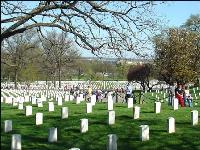
|
Arlington Cemetery
More than four million people visit the cemetery annually, many coming to pay final respects at graveside services, of which nearly 100 are conducted each week.
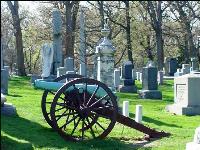
|
An artillery piece from the Civil War on the grounds at Arlington.

|
Tomb Of The Unknowns
"Here Rests In Honored Glory An American Soldier Known But To God"
The Tomb of the Unknowns, near the center of the cemetery, is one of Arlington's most popular tourist sites.
The Tomb contains the remains of unknown American soldiers from World Wars I and II, the Korean Conflict and (until 1998) the Vietnam War. Each was presented with the Medal of Honor at the time of interment and the medals, as well as the flags which covered their caskets, are on display inside the Memorial Amphitheater, directly to the rear of the Tomb.


|
The U.S. Supreme Court
The classical corinthian stle of the building was selected because it best harmonized with nearby congressional buildings and was completed in 1935.


|
The Library Of Congress
The Library of Congress occupies a unique place in American civilization. Established as a legislative library in 1800, it grew into a national institution in the nineteenth century. Since World War II, it has become an international resource of unparalleled dimensions.

|
The Interior Of The Library
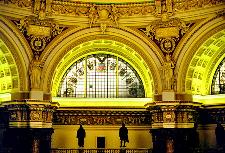
|
Some beautiful stained glass within the library

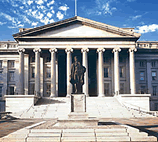
|
U.S. Treasury Building
The United States Treasury Building is one of Washington's best kept secrets. Declared a National Historic Landmark in 1972, the Treasury Building is one of our nation's most significant monuments. A magnificent granite structure in the Greek Revival style, it was constructed over a period of 33 years, between 1836 and 1869.

|
A statue of Alexander Hamilton stands in front of the Treasury building.

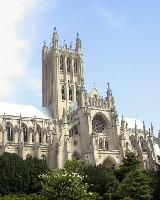
|
The National Cathedral
The idea for a national cathedral is as old as Washington DC itself. In 1791, when Congress selected the site to be the capital of the United States, President George Washington commissioned Major Pierre l'Enfant to design an overall plan for the future seat of government.
Included in l'Enfant's plan was a church, "intended for national purposes, such as public prayer, thanksgiving, funeral orations, etc.,and assigned to the special use of no particular Sect of denomination, but equally open to all."
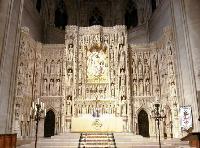
|
The Main Altar
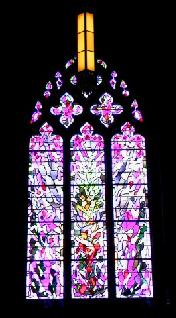
|
Some stained glass windows inside


|
The Pentagon
Directly across the Potomac River from the District of Columbia in Arlington County, Virginia, is the building that has become a synonym for the Department of Defense--the Pentagon. This enormous and busy structure had its origins during World War II. The outbreak of war in Europe in 1939 placed tremendous demands on the War Department and greatly increased its needs for office space. By 1941 department personnel worked in at least seventeen different buildings within Washington D.C. Although the department opened a new building in the northwest part of the city, it became inadequate even before it was occupied. The War Department needed a new home and a big one.

This is fun. Let's look around this great city a little more.
